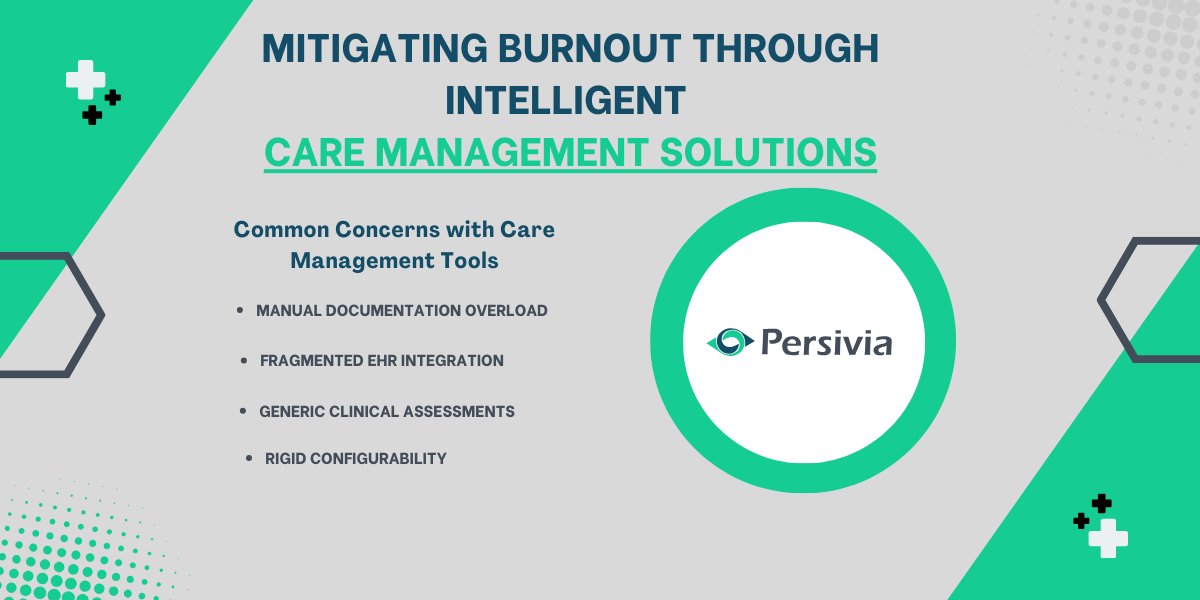
Selling On Marketplaces Vs. Building An Ecommerce Website
The benefits of selling products online include everything from expanding geographic reach to building a more engaging buyer journey. Ecommerce also supports subscription programs, new product release, higher customer value optimization (CVO) and greater opportunity for the direct-to-consumer sales market.
Identifying the best channels to sell on brings many considerations into play. It quickly becomes daunting to choose the right path for online sales. The two most popular options are selling on marketplaces or building an ecommerce website, and both options come with their own benefits and disadvantages.
Before getting into the pros and cons for each, let’s start with some definitions:
- Online marketplaces are third-party websites for product listings where sellers from across product categories and markets can sell. Amazon, eBay and Etsy are three high-profile examples, but there are thousands of niche marketplaces, too.
- Ecommerce websites refer to proprietary websites that brands build to sell directly to consumers. Many of these websites are built using ecommerce platforms like Magento, Shopify, and WooCommerce.
Some of the differences between marketplaces and ecommerce websites are plain to see. The nitty-gritty of which option is right for any brand comes down to that brand’s products and priorities.
Keep reading as we dive deeper into the pros and cons that point to which ecommerce sales channel is the best option for your business.
Pros To Selling On Marketplaces
Online marketplaces in general (and Amazon in particular) enjoy an enormous existing user base. Amazon alone reached $125.5 billion in sales just in Q3 of 2020, and 2.5 billion packages were sent over the course of the entire year.
Clearly, one benefit to selling on Amazon or any other marketplace is that there is an existing audience to sell to, sometimes comprising hundreds of millions of users.
Other benefits to selling on marketplaces include:
- You don’t have to build anything yourself, just optimize your product listings. Since the site is already established (and consumer traffic with it), you automatically enjoy the benefits of consumer trust in that platform, too.
- Although product listing optimizations are highly competitive, you can easily research the competition. Browse through the product categories you sell in to see what the competition is doing, and you can reverse engineer their optimizations.
- Marketplaces are well-suited for sellers and resellers plus direct-to-consumer brands and manufacturers. This means they’re a good solution for multiple company structures and sales models.
- Creating a seller account takes a minimal investment of time (especially when compared to building an ecommerce website from scratch).
- Advertising opportunities are baked right into each marketplace, which often means reduced marketing costs when ads are purchased.
- Setting up product listings doesn’t require you to reinvent the wheel, either — product data optimizations are straightforward with character limits and other guidelines for each product data field. This kind of data optimization does require product information management software (PIM) for most brands, but fortunately those solutions have seen superb development, tapping even more opportunities for product optimizations with technology like AI.
- Depending on the marketplace and the kind of account you create, many parts of the buyer journey and order fulfillment can be taken care of by the marketplace, such as payment processing.
Selling on marketplaces is the fastest and least expensive way to get products online. It sets the lowest bar for entry, but that’s not to say there aren’t challenges. Even with millions of unique visitors to the biggest marketplaces, getting those consumers to view your products and not someone else’s requires strategy, product listing optimizations, advertising dollars and robust product data management.
Keep reading to learn about the high-level cons to selling on marketplaces.
Cons To Selling On Marketplaces
The easiest option will always have its drawbacks. With a low bar to entry, competition runs high on marketplaces, especially after the 2020 boom to online shopping. Walmart.com had more than 33,000 sellers in January 2020, and Amazon currently has more than 2.5 million. This competition is easy to research, but its presence does make it a challenge to predict sales for a brand just starting on any marketplace that’s already such a red ocean.
Other cons to selling on marketplaces include:
- No matter how unique your product is, there are going to be similar offerings on most marketplaces. Who will get the consumer’s attention and score that final sale? Depending on how crowded a market is for a specific product, a brand just getting started might see real challenges to stand out. On marketplaces like Amazon, other sellers can even target users who view your listings.
- Despite the relative ease of putting product listings up, most marketplaces charge per listing, and the cost is a disincentive. It’s fees like these that start to add up even before a single sale is made. Transaction commissions have to be taken into account, too.
- Product data management can become a beast when managing listings for marketplaces, especially for brands working with hundreds or thousands of SKUs. Optimizing product information for Amazon will require different tweaks to listing copy, product images and video than the same company’s Etsy listings. Once multiple marketplaces enter into an ecommerce strategy, this kind of segmentation makes it nearly impossible for a brand to keep all product information complete and accurate. At least, it becomes impossible in spreadsheets. Fortunately, PIM software exists to streamline this process and remove this “con.”
- Branding is tough on marketplaces, too. The overwhelming consumer trend is favoring direct-to-consumer purchasing, in part because consumers like to interact with the brands they know and trust. Getting consistent branding is hard or impossible on most marketplaces, however, where the website’s own branding prevails.
- Most marketplaces don’t allow direct communication with shoppers. This renders multichannel marketing campaigns a challenge. The data marketplaces share with brands about consumers visiting the site can be quite limited, too. These restrictions are more problematic today with trends in personalization’s. Consumer expectations have reached the point that consumers even want ads and product suggestions completely personalized to their interests. Without access to behavioral data on marketplaces, however, brands aren’t able to meet that expectation.
Pros To Selling On Ecommerce Sites
A proprietary ecommerce website gives a brand control of virtually everything. The online shop belongs entirely to that business and can be developed using any number of existing ecommerce platforms or open-source options. Marketing campaigns and customer loyalty are the biggest benefits for a brand using their own ecommerce site, and the advantages don’t stop there.
Other benefits to selling on an ecommerce website include:
- Building an ecommerce website gives a business total control over the buyer journey at every stage. Custom selling scenarios across channels are easily integrated into a website built to capture the necessary user data.
- Branding, too, is totally customizable on an ecommerce website. The messaging and “brand personality” can shine bright with the text, colors, imagery and overall experience the website provides. No cookie-cutter guidelines or character limits will restrict a brand here.
- Moving further into personalization’s, the user experience (UX) is also within a brand’s power to optimize for its audience. This means customizing the exact experience provided to customers, including the necessary integrations with other systems for a seamless journey to that final “buy” button.
- A brand also controls the features list on an ecommerce website. Most ecommerce platforms allow feature integration through modules or extensions. Ecommerce development agencies can create custom modules, too.
- The limited retargeting and personalization’s we discussed as a “con” on marketplaces is the opposite on an ecommerce website. Building your own site, you have direct access to your shoppers. This means you can create lists, gather behavioral and preferential data, and better personalize the content you share for each consumer segment.
- With direct access to consumers, a brand can also provide better customer service on an ecommerce website. This includes training proprietary customer service staff with real product expertise as well as personalizing the UX for service channels.
- When customers buy directly from an ecommerce website, they’re also more aware of whom they’re buying from. This opens the door for customer loyalty, which is next to impossible when selling on marketplaces. Keep reading to learn more about customer loyalty and how to measure it.
Owning an ecommerce website leads to a richer and deeper type of customer acquisition. Analyzing consumer behavior permits more relevant marketing activities, too, like abandoned shopping cart recovery and remarketing ads.
Building a proprietary ecommerce website isn’t without its disadvantages, however. Keep reading to learn what the detractors are to this option.
Cons To Selling On Ecommerce Sites
The greatest con when considering selling products on an ecommerce website is the cost (in time and investment) required to develop it. Even when using platforms like Magento to help build an ecommerce site, it still requires significantly more than simply loading product data to Amazon.
Other cons to selling on marketplaces include:
- Taking the cost issue just a little further, additional investment is needed beyond the ecommerce site itself. A brand also needs to buy a domain name, secure HTTPS certificate, and pay for any other solutions that integrate to the website. While marketing can be more robust when connected to a proprietary website, those marketing activities will cost more, too.
- Content marketing a brand “owns” on their ecommerce site is enormously valuable, but it does put another hurdle up when trying to get a site live. Creating this content is another task that adds to the bill and the time required.
- Technical issues during site development can act as a bottleneck to an ecommerce website project, too. Setting up a shopping cart and secure credit cart processing sometimes cause hiccups, especially when trying to build a website without help from a specialist.
- Once the site is live, there’s the biggest hurdle of all: acquiring traffic. Where the “automatic audience” on marketplaces is the biggest pro for selling there, the lack of an existing audience is the biggest con to selling on an ecommerce website. Generating traffic falls entirely on the brand who builds the site. This kind of work is never done—there will always be more marketing needed, changes to retargeting efforts, and content-rich strategies required to keep relationships with consumers going. Keep reading to learn more about digital marketing for ecommerce stores to determine whether this con is a deal maker or breaker for you.
- Even after developing the website, ongoing site maintenance is required, too, even after it’s live and converting leads.
- Customer service is simultaneously a pro and a con for brands on their own ecommerce websites. On one hand, your brand can contact and serve customers directly. This provides quality assurances and allows for more data collection. At the same time, that customer service costs money. Investing in the channels and in the service personnel puts up a final hurdle for brands considering their own ecommerce websites.
The Multichannel Solution
Selling on marketplaces or on an ecommerce website can both be profitable. Does a brand really have to choose one or the other? Or are these advantages and disadvantages better factored into a multichannel sales strategy?
Selling on marketplaces won’t go a long way to help a company build brand awareness, but developing an ecommerce website costs more. Bearing these key differences in mind, companies today are better positioned than ever to sell on both channels. The questions of “when” and “in which order” come down to each business’s requirements and priorities.
Another factor to consider when weighing the option of multichannel sales is the reality that consumers are looking everywhere before they buy. Today, three in four shoppers visit other online shopping venues before making a purchase on Amazon.
Channel loyalty doesn’t exist among consumers anymore. It’s too easy to open another tab and check prices or products elsewhere. Companies selling online, therefore, don’t need any loyalty to one channel, either. It’s about showing up where consumers are and doing so consistently.
The same 2.5 billion packages that Amazon shipped in 2020 represent products that are offered on more than two million third-party websites. Many of those third-party websites are other marketplaces, and even more are brand ecommerce websites. This means that the most competitive brands are already into this trend of multichannel sales.
Ecommerce no longer requires just one approach. Brands can enjoy the benefits of selling on marketplaces while also enjoying the advantages of an ecommerce website.
How To Implement A Multichannel Strategy
The first step in implementing a multichannel strategy is to choose the channels. Which marketplace (or marketplaces) will you sell on? Which SaaS or open-source solution will you use to develop your ecommerce website?
Selecting the sales channels goes hand-in-hand with selecting the communication channels, too. That might include social channels, for instance, with the boom in new “shoppable posts.” Those same social channels are also a key communication line within your multichannel marketing.
Choosing the channels for both marketing and sales requires knowing your target customer. For example, a brand who serves quality-oriented customers should invest more time and resources into channels that foster deeper customer service and more personalization. Specifically, quality-focused customers will probably be more inclined to buy on an ecommerce website of a brand they trust than to browse for the cheapest possible price on Amazon. They’ll also have higher expectations for customer service.
Once again, new technologies come in to save the day with any multichannel strategies. Software like a CRM links and integrates channel communication and sales information, while PIM makes optimizing product data for multiple channels possible.
The aims of a multichannel sales strategy are ultimately to build a stronger brand and to seal leaks between steps in the buyer journey. The latter results in more sales right off the bat, and the former is how brands build customer loyalty and improve CVO.
The digital transformation has become more than just the move to ecommerce. It’s become an intricate world of pros and cons across multiple sales channels. To play a part in shaping that future, it’s important to focus on your brand’s priorities when deciding which channels to sell on.
If you must pick just one, start by assessing your budget and the number of eyes you want on your products. For an immediate audience or brands with less time and money to spend, launching to an ecommerce marketplace makes the most sense. For brand-conscious businesses with big marketing ideas, an ecommerce website will probably be best.
In the long term, however, just about every brand benefits from considering a multichannel sales strategy for long-term ecommerce strategy.
Author Bio:
The benefits of selling products online include everything from expanding geographic reach to building a more engaging buyer journey. Ecommerce also supports subscription programs, new product release, higher customer value optimization (CVO) and greater opportunity for the direct-to-consumer sales market.

Law Firm Management: How Technology is Driving Efficiency

Most Popular Social Networks: Dominating Online Platform







